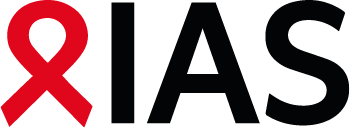Share Abstract
Use of oral DAA-based regimens in HIV-HCV co-infected patients in a real life setting - interim analysis from the ANRS CO13 HEPAVIH cohort
Abstract Content:
Background: It is widely recommended to treat chronic hepatitis C in HIV co-infected patients, considering its worse evolution and prognosis in these patients. Several new oral direct active agent (DAA)-based regimens can be used, with often quite similar antiviral activity.
Methods: HIV-HCV co-infected patients enrolled in the ANRS CO13 HEPAVIH cohort who initiated an oral DAA-based regimen were included. We report safety, end of treatment (EOT) response and sustained virologic response (HCV-RNA < 15 UI/mL) at 12 weeks (SVR12).
Results: We included 245 patients, of those, 133 patients reached EOT (54%) and 62 patients SVR12 (25%). Median age was 53 years [IQR: 49-55], 78% were male, 98% were on antiretroviral therapy (ART), 90% had an HIV viral load < 50 copies/mL, and median CD4 was 530/mm3 [IQR: 310-715]). Sixty-nine percent of the patients were cirrhotic, and 71% had failed to respond to previous treatment. HCV genotype (Gt) repartition was as follows: Gt1, 58%; Gt2, 4%; Gt3, 13%; Gt4, 25%.HCV-RNA was undetectable at the end of treatment (EOT) in 99% of the patients (95% confidence interval (CI): 96%-100%) and global SVR12 was 90% (CI: 80-96). Overall, EOT response was 100% in both non-cirrhotic and cirrhotic patients. Two premature stops for safety reasons were observed.EOT and SVR12 according to baseline characteristics and DAA prescribed regimen are presented in Table 1.
Table 1: Proportion of patients with EOT and SVR12 according to baseline characteristics and mostly prescribed anti-HCV treatment regimen
[Table 1]
DCV: Daclatasvir; LDV: Ledipasvir; PR: Pegylated interferon-ribavirin; SOF: Sofosbuvir; W: Weeks.
Conclusions: In this real-life prospective french national cohort, oral-DAAs based regimens showed high efficacy and excellent tolerability in HIV-HCV co-infected patients in a large variety of clinical settings.
Methods: HIV-HCV co-infected patients enrolled in the ANRS CO13 HEPAVIH cohort who initiated an oral DAA-based regimen were included. We report safety, end of treatment (EOT) response and sustained virologic response (HCV-RNA < 15 UI/mL) at 12 weeks (SVR12).
Results: We included 245 patients, of those, 133 patients reached EOT (54%) and 62 patients SVR12 (25%). Median age was 53 years [IQR: 49-55], 78% were male, 98% were on antiretroviral therapy (ART), 90% had an HIV viral load < 50 copies/mL, and median CD4 was 530/mm3 [IQR: 310-715]). Sixty-nine percent of the patients were cirrhotic, and 71% had failed to respond to previous treatment. HCV genotype (Gt) repartition was as follows: Gt1, 58%; Gt2, 4%; Gt3, 13%; Gt4, 25%.HCV-RNA was undetectable at the end of treatment (EOT) in 99% of the patients (95% confidence interval (CI): 96%-100%) and global SVR12 was 90% (CI: 80-96). Overall, EOT response was 100% in both non-cirrhotic and cirrhotic patients. Two premature stops for safety reasons were observed.EOT and SVR12 according to baseline characteristics and DAA prescribed regimen are presented in Table 1.
Table 1: Proportion of patients with EOT and SVR12 according to baseline characteristics and mostly prescribed anti-HCV treatment regimen
| Cirrhotic status | Genotype | Most frequent combinations and durations | Undectable HCV viral oad at EOT (%, n/N) | SVR 12 (%, n/N) |
| non cirrhotics | 1 | SOF + DCV 12W | 100% (7/7) | 100% (2/2) |
| non cirrhotics | 1 | SOF + LDV 12W | 100% (2/2) | - |
| non cirrhotics | 1 | SOF + DCV 24W | 100% (4/4) | - |
| non cirrhotics | 3 | SOF + PR 12W | 100% (2/2) | 100% (1/1) |
| non cirrhotics | 4 | SOF + LDV 12W | 100% (2/2) | - |
| 4 | SOF + DCV 12W | 100% (3/3) | 100% (1/1) | |
| Cirrhotics | 1 | SOF + DCV 24W | 100% (36/36) | 89% (17/19) |
| Cirrhotics | 3 | SOF + DCV 24W | 100% (6/6) | 100% (2/2) |
| Cirrhotics | 4 | SOF + DCV 24W | 100% (8/8) | 100% (3/3) |
DCV: Daclatasvir; LDV: Ledipasvir; PR: Pegylated interferon-ribavirin; SOF: Sofosbuvir; W: Weeks.
Conclusions: In this real-life prospective french national cohort, oral-DAAs based regimens showed high efficacy and excellent tolerability in HIV-HCV co-infected patients in a large variety of clinical settings.
